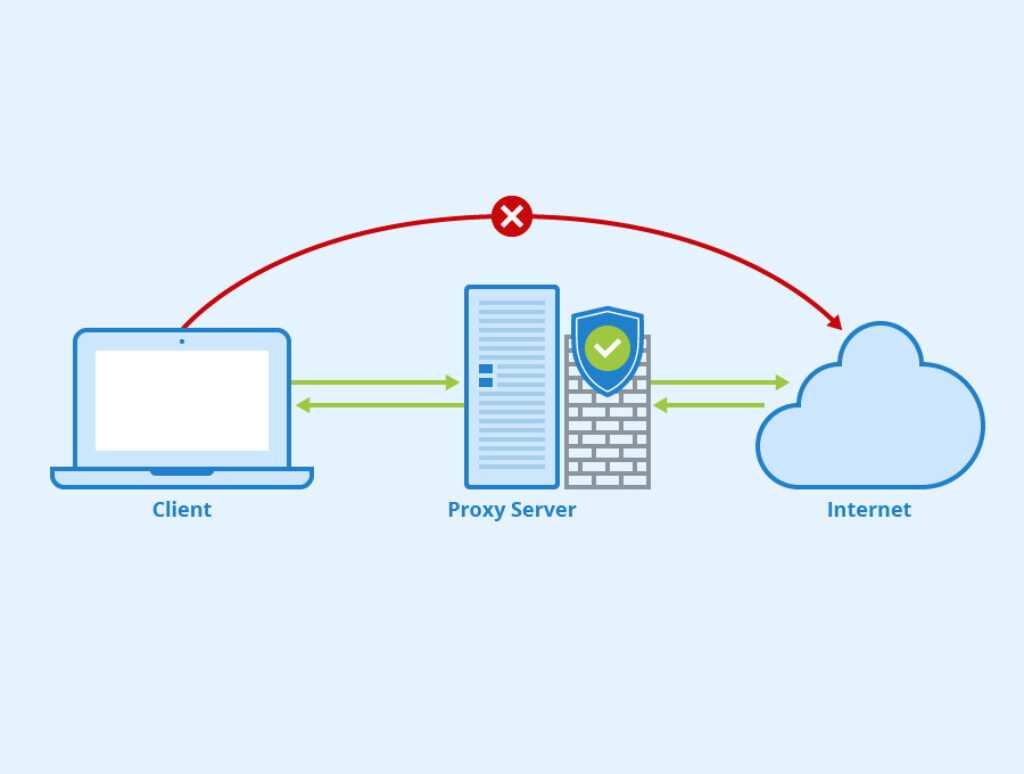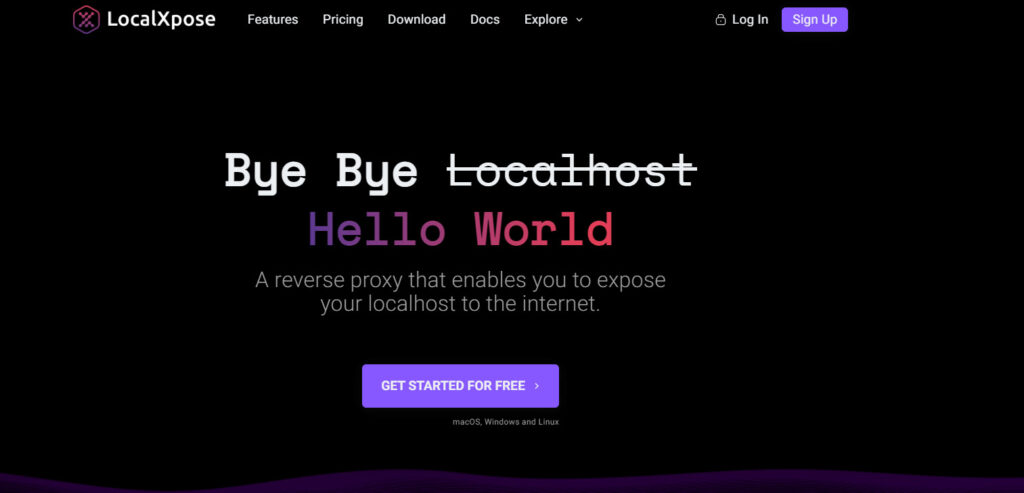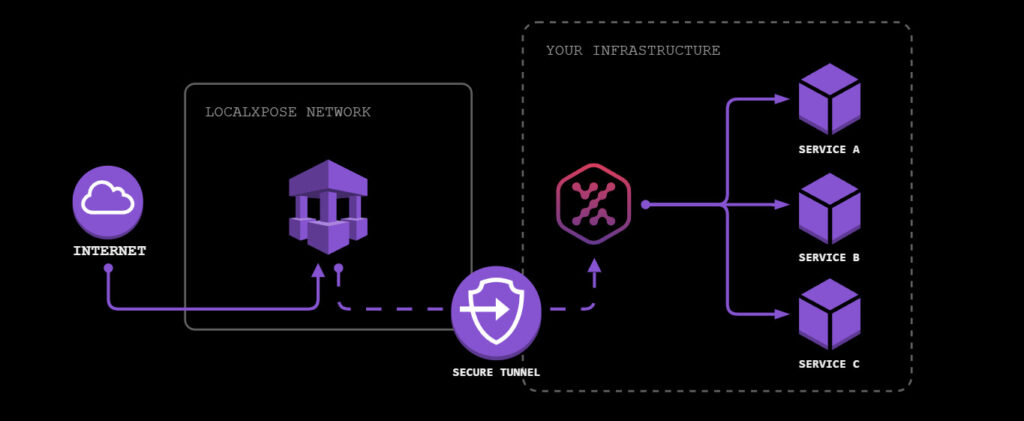The Purpose of Reverse Proxy: A Comprehensive Guide

A reverse proxy serves as a vital intermediary between clients and back-end servers, playing a crucial role in enhancing the performance, scalability, reliability, and security of web applications and services. By intelligently forwarding client requests to the appropriate back-end servers and efficiently relaying responses back to the clients, reverse proxies offer a host of benefits for modern digital infrastructures.
Today, we delve into the purpose of reverse proxy, shedding light on their fundamental role in optimizing web-based systems. Whether it’s handling heavy traffic loads, improving response times, or bolstering security measures, reverse proxies have become indispensable tools for organizations seeking to deliver exceptional online experiences.
In our quest to find a suitable solution for harnessing the true potential of reverse proxies, we turn our attention to LocalXpose. By offering a comprehensive set of features and capabilities, LocalXpose emerges as a compelling choice for those seeking an efficient and effective reverse proxy solution that aligns perfectly with their specific purpose of reverse proxy.
So, let’s dive right in!
Contents
What is the Purpose of Reverse Proxy?
A reverse proxy is a type of proxy server that sits between the client and the back-end servers. It forwards client requests to the back-end servers and returns the response to the client.
But first, if you are new to this realm, it’s relevant to point out what is proxy. In general, a proxy server acts as a go-between for client requests and resource-providing servers. Instead of the client directly connecting to the server, the request is directed to the proxy server. This simplifies the request, adds control, and offers benefits like load balancing, privacy, and security. Proxies bring organization and encapsulation to distributed systems.

So, what are the differences between a reverse proxy and a proxy?
While sharing similarities, understanding the differences in general and the purpose of reverse proxy, in particular, is crucial for selecting the appropriate server type.
| Proxy Server | Reverse Proxy Server | |
| Purpose | Acts as an intermediary between client and server | Improves performance, scalability, and security of web apps |
| Traffic Direction | Routes traffic from clients to servers | Routes traffic from clients to servers in the opposite direction |
| Location | Typically located on the client side of the network | Typically located on the server side of the network |
| Configuration | Requires configuration on the client side | Requires configuration on the server side |
| Security | Provides filtering and anonymity capabilities | Hides back-end servers, tracks IP addresses of client requests |
| Functionality | Caching, filtering, and anonymity | Load balancing, web acceleration, caching, and scalability |
So, proxy servers and reverse proxy servers route and secure traffic between clients and servers. Proxies serve various purposes like caching, filtering, and anonymity, while reverse proxies enhance web app performance, scalability, and security.
In this section, we will discuss the purpose of reverse proxy as follows:
Load Balancing
Load balancing is a primary objective of reverse proxies. They evenly distribute client requests among servers, maximizing speed and capacity utilization while avoiding server overload. This enhances web app performance and reliability. Here’s more about load balancing:
- Load balancing disperses incoming network traffic across multiple servers to prevent overwhelming a single server.
- This purpose of reverse proxy ensures the even distribution of client requests across multiple servers, improving web app performance and reliability.
- Load balancing operates at different network layers: the transport layer (Layer 4) and the application layer (Layer 7).
- Reverse proxies commonly function as Layer 7 load balancers, distributing requests based on application-level data like URL or HTTP headers.
- Various algorithms, including round-robin, least connections, and IP hash, are used for load balancing.
- Hardware and software solutions, such as dedicated load balancers, software load balancers, and cloud-based load balancers, enable load balancing.
Load balancing is a crucial purpose of reverse proxy. By distributing client requests across servers, it enhances web app performance and reliability. Reverse proxies excel as Layer 7 load balancers, utilizing application-level data. Load balancing can be achieved through different algorithms and solutions based on specific application requirements.
Web Acceleration
Web acceleration is a significant role of reverse proxies. They enhance web app speed by compressing inbound and outbound data and caching frequently accessed content. Here’s more on web acceleration:
- Web acceleration boosts web app speed and performance by minimizing data transmission between clients and servers.
- Reverse proxies compress inbound and outbound data, reducing data transmission and improving web app speed.
- They cache commonly requested content like images and videos, further reducing data transmission and enhancing web app speed.
- Reverse proxies enhance speed and security by incorporating features like compression and TLS encryption in client-reverse proxy communication.

ISo, one crucial purpose of reverse proxy is web acceleration. Compressing data and caching commonly accessed content improve web app speed. Additionally, features like compression and TLS encryption enhance both speed and security.
Caching
Caching is a vital role of reverse proxies. They store static content like images and stylesheets, serving them directly to clients and reducing server and network load. The purpose of reverse proxy enhances web app speed and performance. Here are more details on caching:
- Caching stores frequently accessed data in a cache to boost web app speed and performance.
- Reverse proxies cache static content (e.g., images, stylesheets), reducing server and network load.
- Dynamic content (e.g., database queries, API responses) can also be cached by reverse proxies, further enhancing web app speed and performance.
- Different caching algorithms are used, including time-based and content-based caching.
- Cache eviction policies like Least Recently Used (LRU) and Least Frequently Used (LFU) are employed by reverse proxies.
Caching is another crucial purpose of reverse proxy. By caching static and dynamic content, they improve web app speed and performance. Various caching algorithms and eviction policies cater to specific application requirements.
Security
Reverse proxies enhance web application security by serving as a protective shield between the internet and backend servers. They filter requests, block suspicious traffic, and mask server IP addresses. Here are more details on the security benefits:
- Filtering: Reverse proxies filter requests, blocking malware and inappropriate content to safeguard backend servers.
- SSL Termination: Reverse proxies terminate SSL connections, improving performance and security by relieving backend servers of SSL processing.
- Threat Prevention: By filtering and rate-limiting suspicious requests, reverse proxies protect servers from overload and ensure smooth application functioning.
- IP Address Masking: Reverse proxies obscure server IP addresses, making it harder for attackers to target servers directly and enhancing application security.
It is evident that security is a significant purpose of reverse proxy. They shield web applications from malicious traffic, offering filtering, SSL termination, threat prevention, and IP address masking for improved security.
Scalability
Reverse proxies enhance the scalability, performance, resilience, and security of web applications. They distribute client requests, cache content, terminate SSL connections, and provide an extra layer of security. Here are more details on scalability benefits:
- Load Balancing: Reverse proxies distribute client requests across servers to boost scalability and performance.
- Caching: Reverse proxies cache frequently accessed content, reducing backend server load and improving response time.
- SSL Termination: Reverse proxies offload SSL processing from backend servers, increasing scalability and performance.
- Security: Acting as a barrier, reverse proxies protect backend servers by handling internet traffic and distributing requests.
So, the purpose of reverse proxy includes the essential role in scalability. Through load balancing, caching, SSL termination, and security measures, they enhance the scalability, performance, resilience, and security of web applications.
Read more: Lightweight Reverse Proxy: Benefits, Features, and Top Solutions
Introducing LocalXpose

LocalXpose is a tool designed to bridge the gap between your local development environment and the vast world of the internet. With LocalXpose, you can effortlessly expose your localhost services to the online realm, all while ensuring enhanced security measures – the important purpose of reverse proxy.
LocalXpose is a versatile solution that supports a range of protocols, including HTTP/s, TLS, TCP, and UDP tunnels. Whether you prefer a Command Line Interface (CLI) or a Graphical User Interface (GUI), LocalXpose has you covered. The tool empowers users to create custom subdomains, custom domains, and even wildcard custom domains, opening up possibilities for tailored online access.
Users can specify custom TCP/UDP endpoint ports, enabling seamless integration with their existing setup. LocalXpose integrates Let’s Encrypt, adding an extra layer of protection to your exposed services.
LocalXpose caters to users across multiple platforms, including Windows, Linux, MacOS, and Docker. So whether you’re a developer, a tester, or an enthusiast seeking to unlock the true potential of your localhost, LocalXpose can simplify the process and amplify your online presence.
Is LocalXpose a Good Choice Considering The Purpose of Reverse Proxy?

LocalXpose can meet some of the purposes of a reverse proxy, but not all of them. Here is how LocalXpose can meet each purpose of reverse proxy:
Security: LocalXpose provides a level of security by effectively shielding backend servers from the public internet, employing request filtering mechanisms, blocking suspicious traffic, and concealing the server’s IP address. Additionally, its integration with Let’s Encrypt adds an extra layer of security.
Scalability: With the ability to create custom subdomains, custom domains, and wildcard custom domains, specify custom TCP/UDP endpoint ports, and reserve up to 10 domains and endpoints, LocalXpose grants users some scalability options. However, it’s important to note that without load balancing features, its suitability for scaling web applications may be limited.
Reliability: Unfortunately, there is no available information regarding LocalXpose’s capability to handle failures and ensure effective routing of requests to healthy servers, making it difficult to assess its reliability purpose of reverse proxy in this regard.
Flexibility: LocalXpose exhibits versatility by supporting a range of protocols including HTTP/s, TLS, TCP, and UDP tunnels. Users can also create custom subdomains, domains, and wildcard domains, specify custom TCP/UDP endpoint ports, and reserve multiple domains and endpoints, providing the flexibility purpose of reverse proxy in various usage scenarios.

Caching: It is important to note that LocalXpose does not offer caching features. Consequently, its effectiveness in reducing the load on backend servers and enhancing overall performance may be limited.
All in all, while LocalXpose offers certain strengths such as security measures, flexibility in customization, and support for different protocols, its limitations in load balancing, caching, and reliability aspects should be taken into consideration when evaluating it as a choice considering the purpose of reverse proxy. It is advisable for users to thoroughly assess their specific requirements before making a decision when choosing the best reverse proxy for their needs.
Conclusion
The purpose of reverse proxy is to act as a valuable intermediary server, enhancing the performance, scalability, reliability, and security of web applications and services.
LocalXpose emerges as an effective reverse proxy software for users seeking to expose their localhost services to the internet while enjoying added security benefits. Supporting HTTP/s, TLS, TCP, and UDP tunnels, LocalXpose offers both a convenient Command Line Interface (CLI) and a user-friendly Graphical User Interface (GUI) option.
A standout advantage of LocalXpose is its lightweight and cost-effective nature, providing an affordable alternative to pricier reverse proxy tools. With a subscription priced at approximately $6 per month, it caters to the budget-conscious without compromising on functionality. Its simplicity and user-friendly design further contribute to its appeal, enabling developers to effortlessly expose their localhost services to the online realm.
To experience the benefits of LocalXpose firsthand, we recommend visiting LocalXpose’s website and taking advantage of the best coupon available to secure the most competitive price. Unlock the power of secure exposure for your localhost services with LocalXpose.




